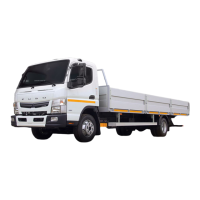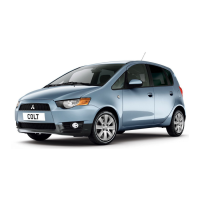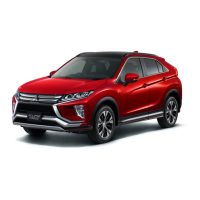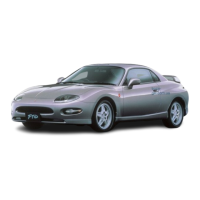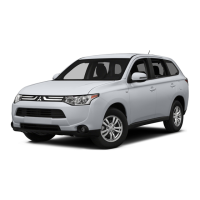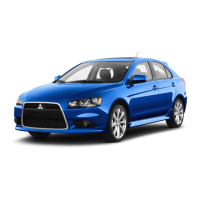SEATS AND SEATBELTS
3–22
WARNING
(1) All seat belt assemblies including
retractors and attaching hardware
should be inspected by an author-
ized MITSUBISHI dealer after any
collision. We recommend that seat
belt assemblies in use during a
collision be replaced unless the
collision was minor and the belts
show no damage and continue to
operate properly.
(2) Do not attempt to repair or replace
any part of the seat belt assem-
blies; this work should be done by
an authorized MITSUBISHI dealer.
Failure to have an authorized MIT-
SUBISHI dealer perform the work
could reduce the effectiveness of
the belts and could result in seri-
ous injury in the event of a colli-
sion.
(3) Once the pre-tensioner has acti-
vated, it cannot be re-used.
It must be replaced together with
the retractor.
(4) The entire pre-tensioner seat belt
system must be inspected by an
authorized MITSUBISHI dealer.
Supplemental restraint
system (SRS) - air bag
EG29A-Fa
The information written in this supplemental
restraint system (SRS) section contains im-
portant points concerning the driver, front
passenger, side air bags and pre-tensioner
seat belts.
The SRS air bags are designed to supple-
ment the primary protection of the driver and
front passenger side seat belt systems by
providing those occupants with protection
against head and chest injuries in certain
moderate-to-severe frontal collisions.
The SRS side air bag is designed to supple-
ment the seat belts and provide the driver
and front passenger with protection against
chest and abdomen injuries in certain mod-
erate-to-severe side impact collisions.
The SRS is NOT a substitute for the seat
belts; for maximum protection in all types of
crashes and accidents, seat belts should
ALWAYS be worn by everyone who drives or
rides in this vehicle. (With infants and small
children in child restraints and older children
buckled in the rear seat).
WARNING
IT IS VERY IMPORTANT TO ALWAYS
PROPERLY WEAR YOUR SEAT BELT,
EVEN WITH AN AIR BAG:
(1) Seat belts help keep the driver
and front passenger properly
positioned which reduces injury
risk in all collisions, and reduces
the risk of serious or fatal injuries
when the air bags inflate.
During sudden braking just be-
fore a collision, an unrestrained
or improperly restrained driver or
front passenger can move for-
ward into direct contact with or
within close proximity to the air
bag which may then deploy dur-
ing the collision.
The initial stage of air bag infla-
tion is the most forceful which
could cause serious or fatal in-
juries if the occupant contacts it
at this stage.
(2) Seat belts reduce the risk of injury
in roll-overs, side or rear impact
collisions, and in lower-speed
frontal collisions, because
driver’s and passenger’s air bags
are not designed to inflate in
those situations.
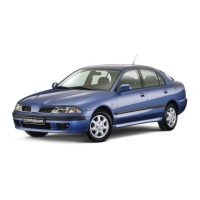
